The United States stock markets rallied strongly this week, but Bitcoin (BTC) did not follow suit. This means that cryptocurrency investors have steered clear and might be worried about the ongoing problems at Silvergate bank. These fears could be what is behind the total drop in the crypto market cap to nearly $1 trillion.
Behavioral analytics platform Santiment said in a March 5 report that there was a “big spike in bearish sentiment” according to its bullish vs. bearish word comparison Social Trends chart. However, the firm added that “the kind of overwhelmingly bearish sentiment can lead to a nice bounce to silence critics.”
Another short-term positive for crypto markets is the weakness in the US Dollar Index (DXY), which has fallen 0.70 over the past 7 days. This suggests that the crypto markets may attempt a rally in the coming days. As long as Bitcoin stays above $20,000, select altcoins may outperform the broader markets.
Let’s study the charts for Bitcoin and the four altcoins that are showing promise in the near term.
USDT/BTC
Bitcoin plunged below the $22,800 support on March 3. The buyers tried to push the price above the breakout level on March 5, but the long wick on the candlestick suggests that the bears are trying to turn $22,800 into resistance.
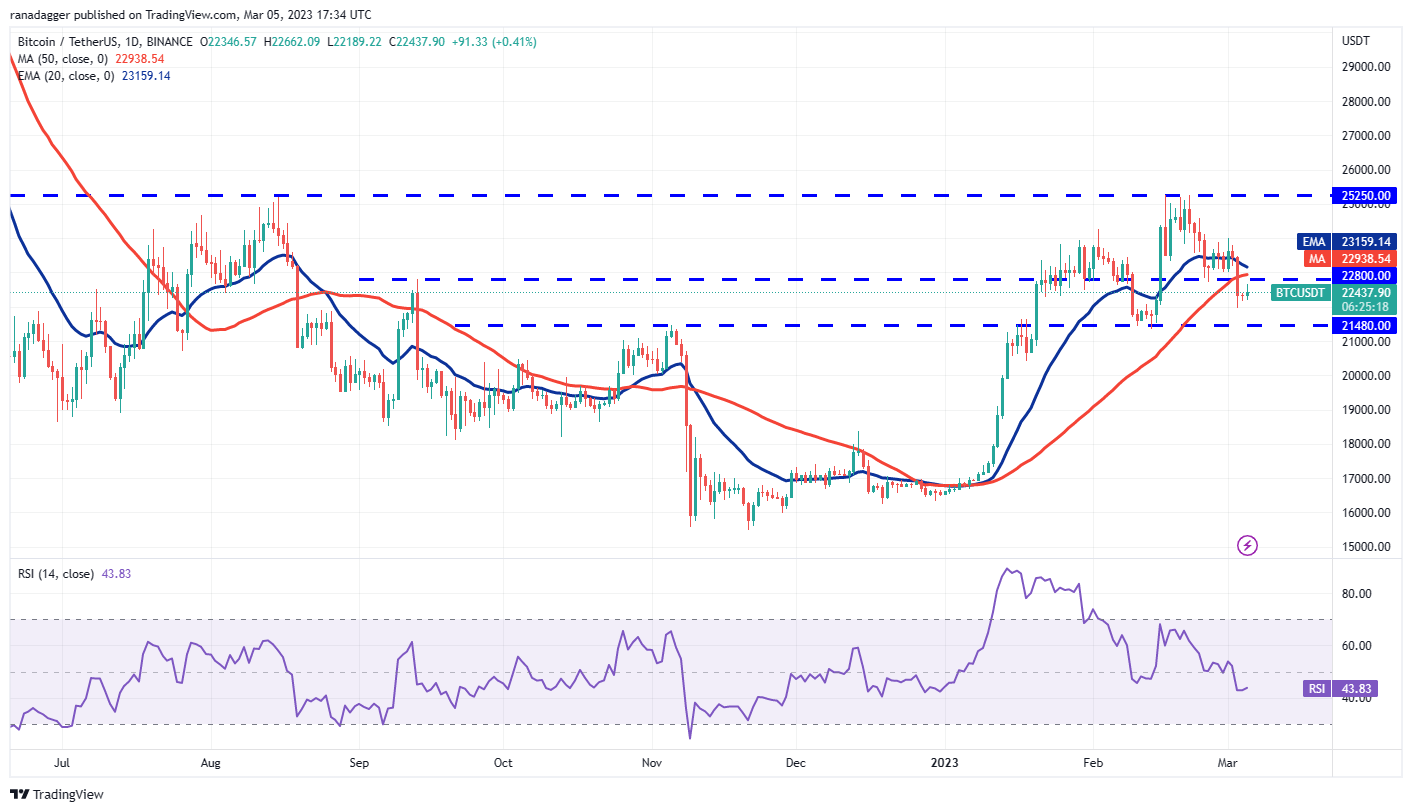
The 20-day exponential moving average ($23,159) has started to turn lower and the RSI is below 44, indicating that the bears are trying to consolidate their position. The sellers will try to sink the price below the support at $21,480. If they can pull it off, the BTC/USDT pair may retest life support at $20,000.
If the bulls want to avoid the dip, they will have to quickly push the price above the 20 day EMA. Such a move will suggest aggressive buying at lower levels. The pair can then go up to $24,000 and then go up to $25,250. A break above this resistance will indicate a possible trend change.
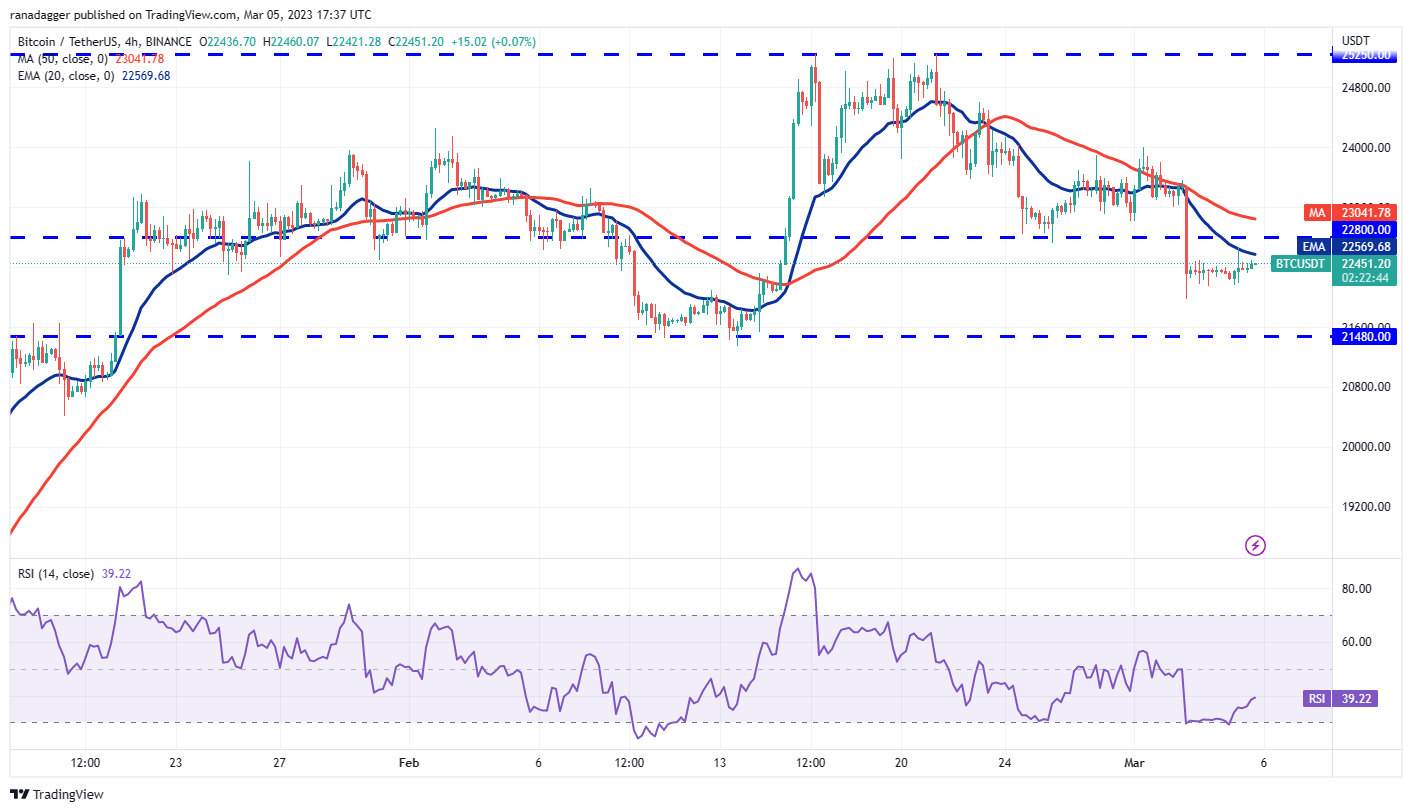
The moving averages are turning down on the 4-hour chart and the RSI is near 39. This indicates that the bears have the upper hand. If the price turns down from the 20-day EMA and falls below $21,971, the pair can retest the support at $21,480.
Instead, if the bulls push the price above the 20-day EMA, it will suggest that the bears may be losing control. The pair could then rally to the 50 simple moving average. This is an important level for bears to defend because a break above it can open the doors for a rally to $24,000.
EOS/USDT
EOS (EOS) broke above the vital resistance at $1.26 on March 3, but the bulls were unable to sustain the higher levels. However, a positive sign is that the price has not broken below the 20-day EMA ($1.17).
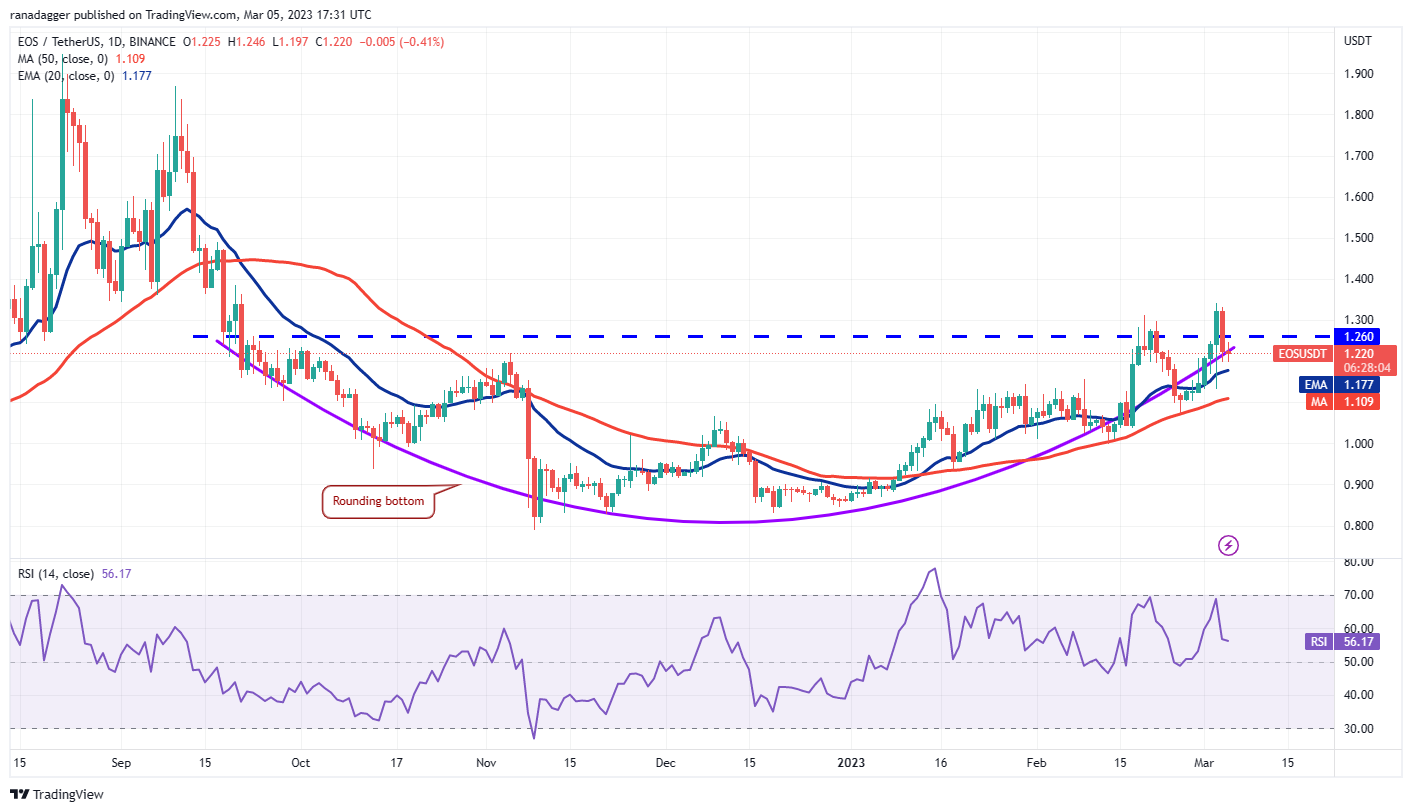
The gradually rising moving averages and the RSI in the positive zone indicate an advantage for the bulls. The EOS/USDT pair has formed a rounded bottom pattern that will complete on a breakout and close above the $1.26 to $1.34 resistance zone. This reversal setup has a target of $1.74.
Important support to watch on the downside is the 50-day SMA ($1.10). Buyers have not allowed the price to fall below this support since January 8, so a break below may accelerate selling. The next support on the downside is $1 and then $0.93.
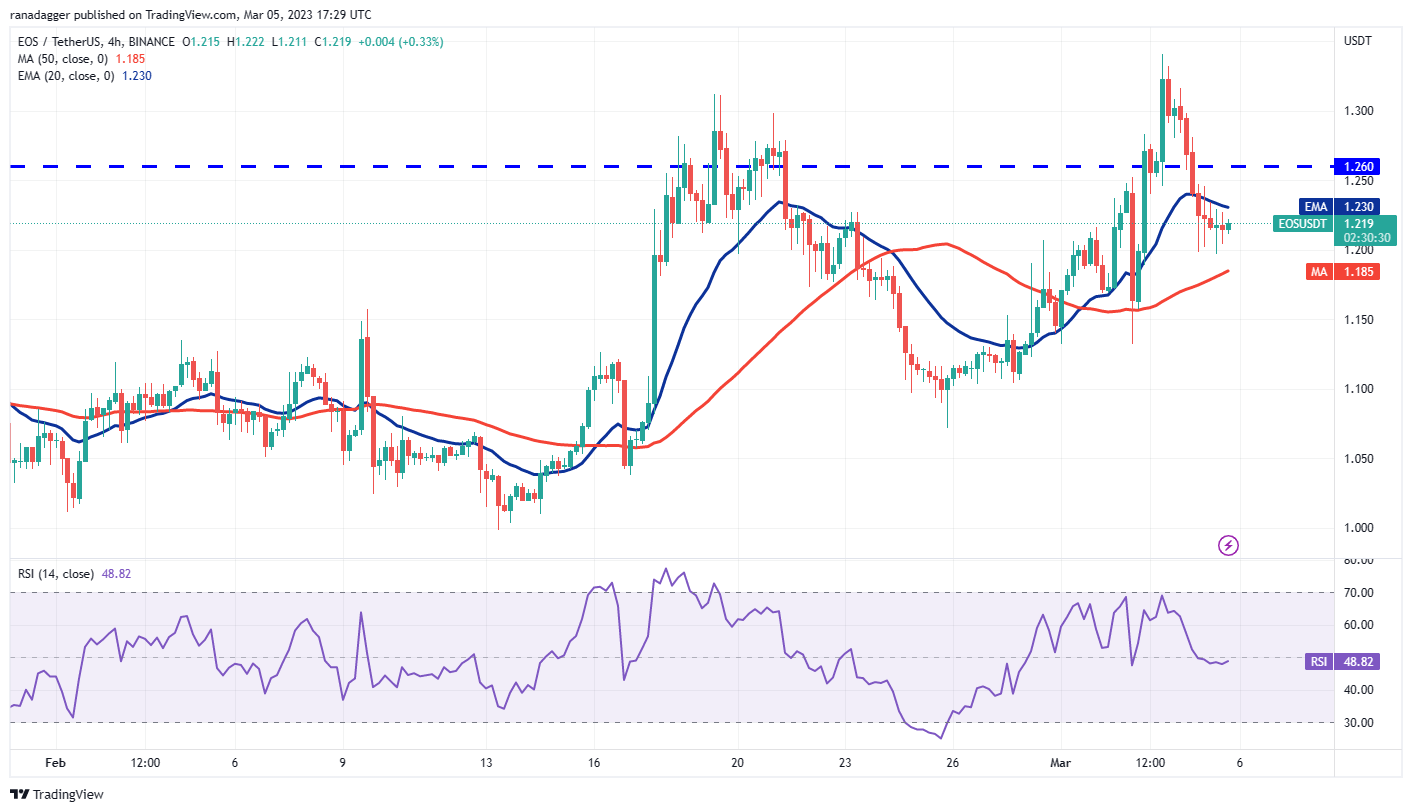
The bears have pulled the price below the 20 EMA, but a minor positive is that the bulls have not allowed the pair to slide to the 50 EMA. This suggests that the lower levels continue to attract buyers. If the price breaks above the 20-day EMA, the bulls will try again to clear the $1.26 hurdle. If they do, the pair can rally to $1.34.
This positive view could be invalidated in the short term if the price turns down and breaks below the 50 SMA. That can extend the decline to $1.11.
STX/USDT
Stacks (STX) rallied sharply from $0.30 on February 17 to $1.04 on March 1, an increase of 246% in a short time. Vertical rallies are usually followed by sharp declines, and that is what happened.
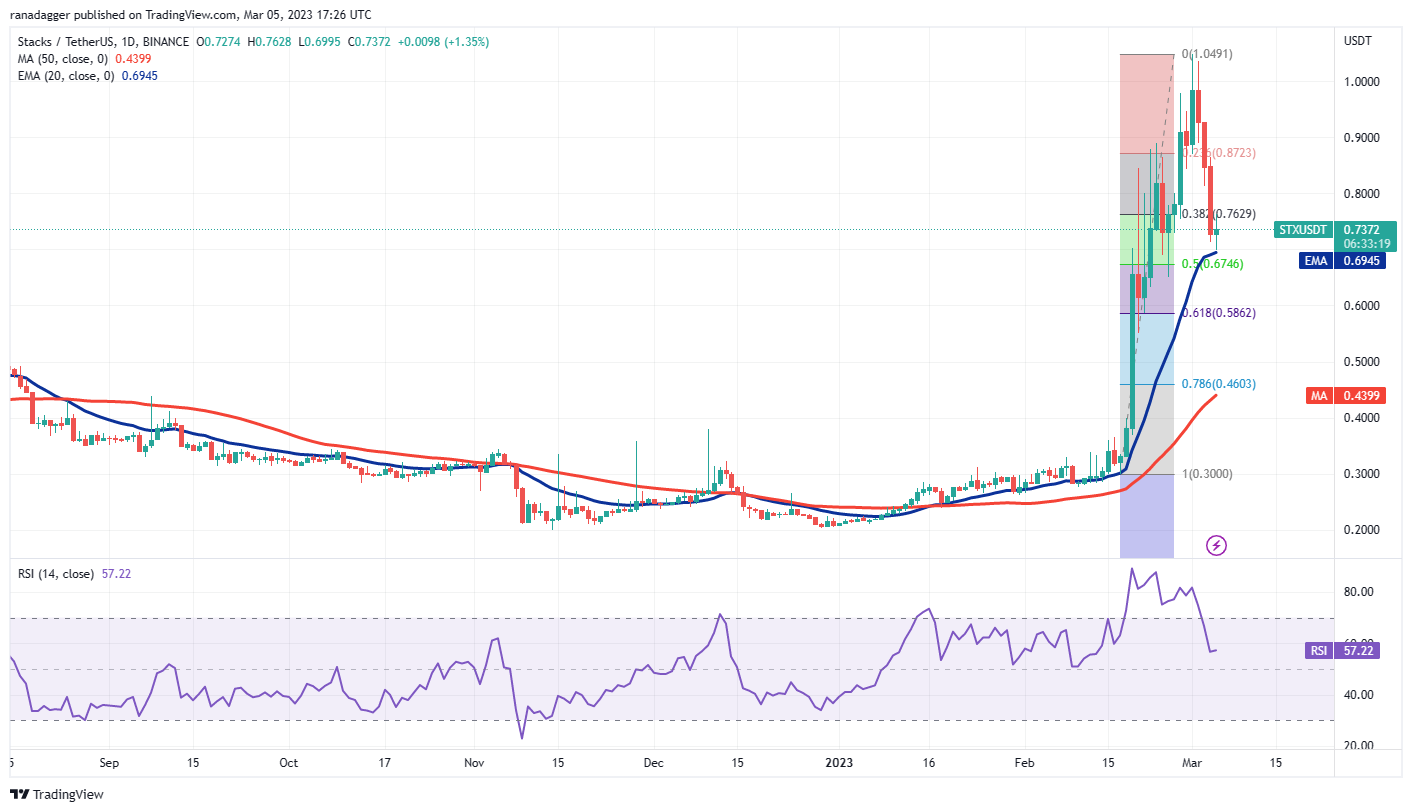
The STX/USDT pair has broken down to the 20-day EMA ($0.69), where it finds buy support. The 50% Fibonacci retracement level of $0.67 is also close, so the bulls will try to protect the level vigorously. On the upside, the bears will try to sell rallies in the $0.83-$0.91 zone.
If the price turns down from this upper zone, the sellers will again try to deepen the correction. If $0.67 is broken, the next support lies at the 61.8% retracement level of $0.58.
Contrary to this assumption, if the buyers push the price above $0.91, the pair can rally to $1.04. A break above this level will indicate a possible resumption of the uptrend. The pair can then rise to $1.43.
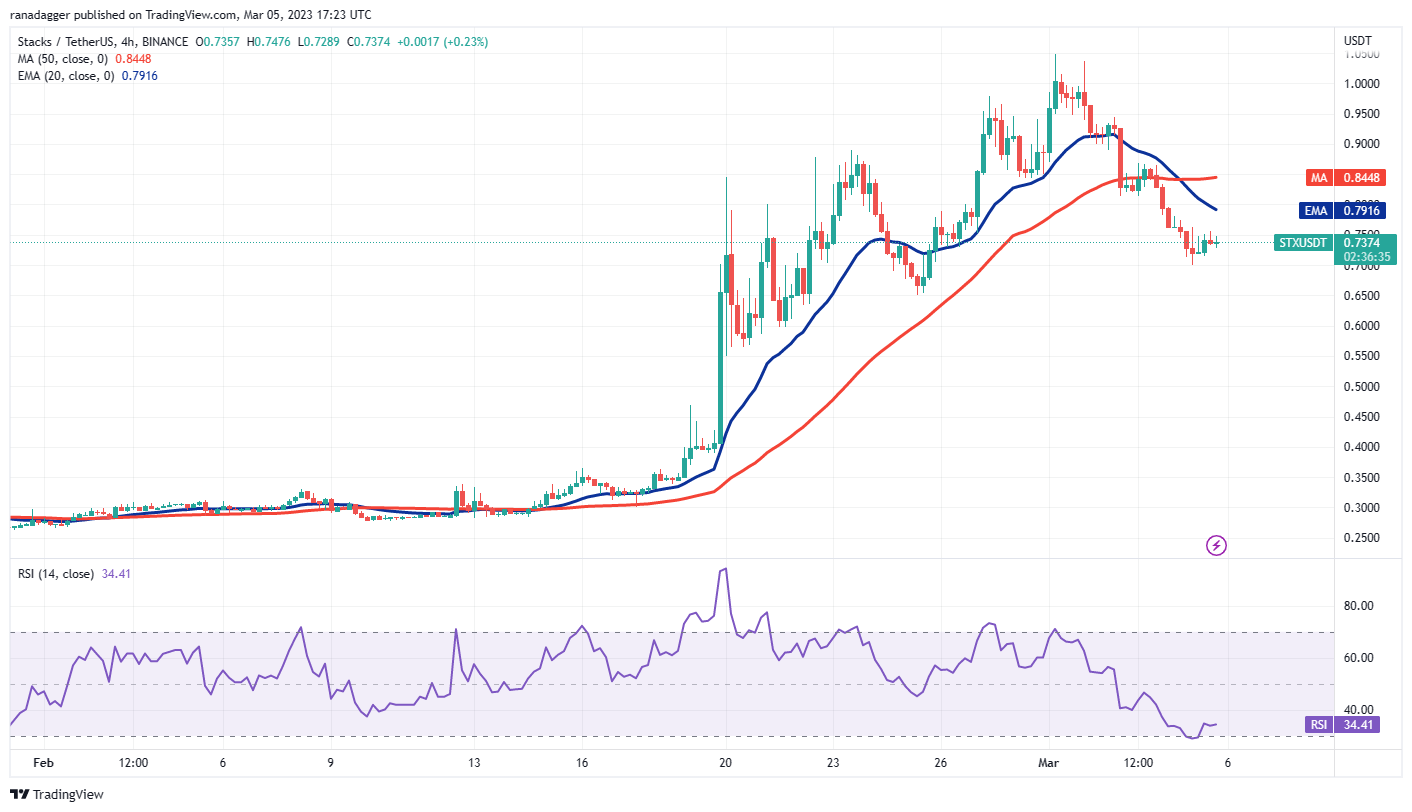
The 4 hour chart shows that the 20 day EMA is turning down and the RSI is in the negative territory, indicating that the bears have a slight advantage. The sellers are likely to defend the moving averages during pullbacks. They will try to stay in control and plunge the price to $0.65 and then $0.56. The bulls will try to fiercely defend this support zone.
The first sign of strength will be a break and close above the 50-SMA. The pair can then go up to $0.94 and then to $1.04.
Related: Binance Recommends P2P as Ukraine Suspends Hryvnia Use on Crypto Exchanges
IMX/USDT
ImmutableX (IMX) rallied from the 50-day SMA ($0.88) on March 3 and closed above the 20-day EMA ($1), indicating strong demand at lower levels.
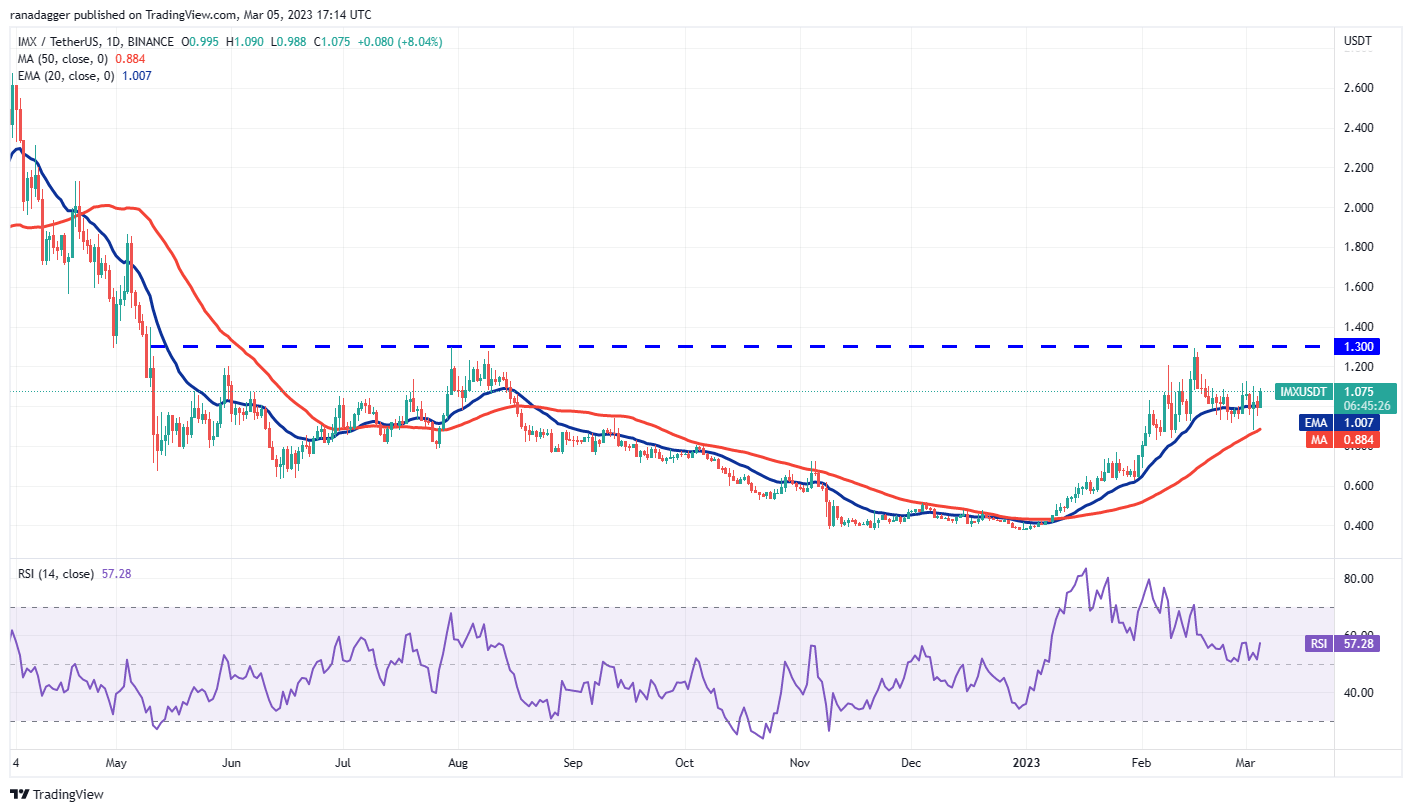
The IMX/USDT pair could rally to $1.12 where the bears will once again try to stop the rally. If the buyers break through, the pair could accelerate towards the strong overhead resistance at $1.30. This is a crucial level to watch out for because a breakout and close above it can signal the start of a new uptrend. The pair can then skyrocket to $1.85.
Conversely, if the price turns down from the current level or $1.12, it will suggest that the bears have not given up yet. The sellers will try again to sink the pair below the 50-day SMA and gain an advantage. If they succeed, the pair could drop to $0.63.
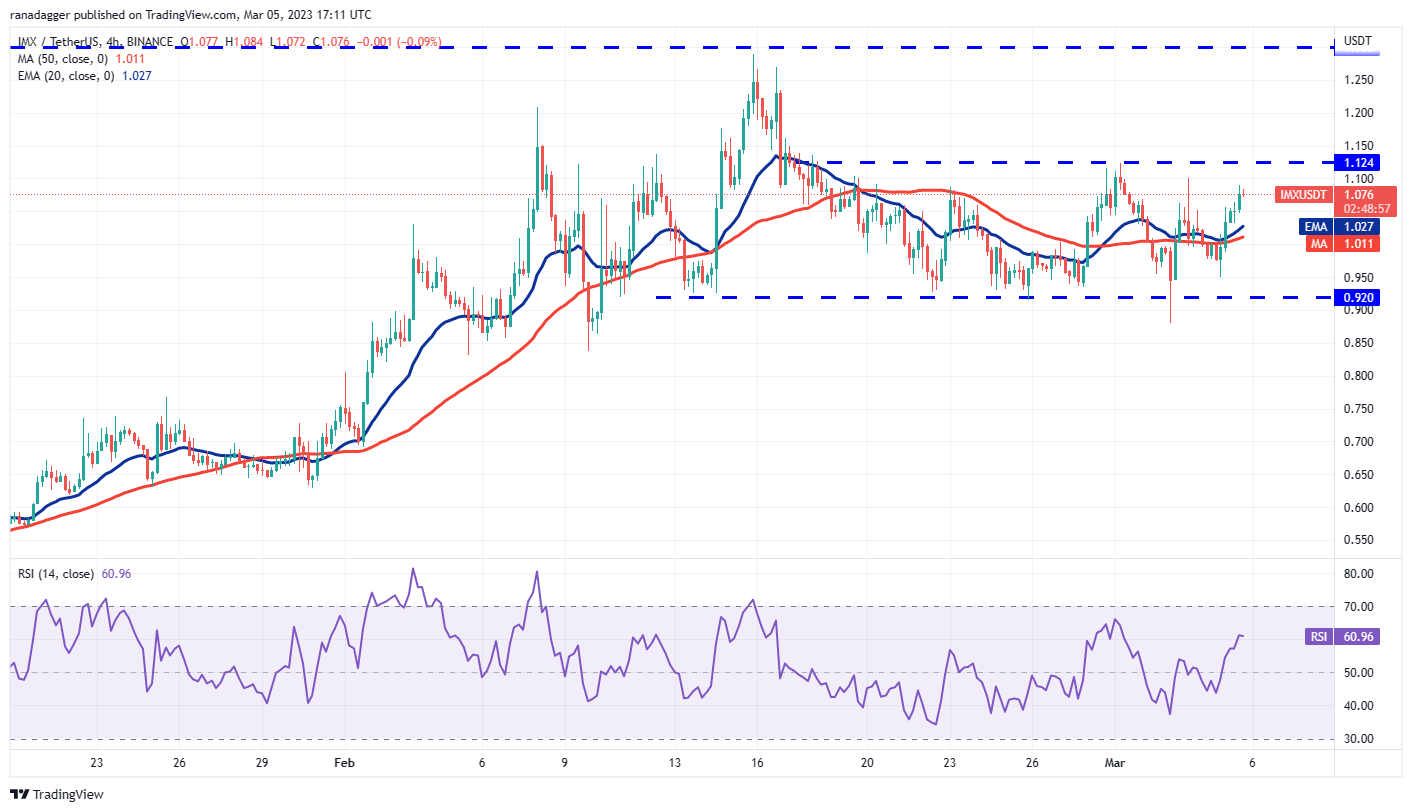
The 4-hour chart shows that the price ranges from $0.92 to $1.12. Typically, in a range, traders buy near support and sell near resistance. Price action within the range could be random and volatile.
If the price rises above the resistance, it suggests that the bulls have beaten the bears. Then the pair can rally towards $1.30. Conversely, if the bears push the price below $0.92, the pair may turn negative in the short term. Support on the downside is at $0.83 and then $0.73.
MXN/USDT
After a short-term pullback, Maker (MKR) is trying to resume its up move. This suggests that sentiment remains positive and traders see dips as a buying opportunity.
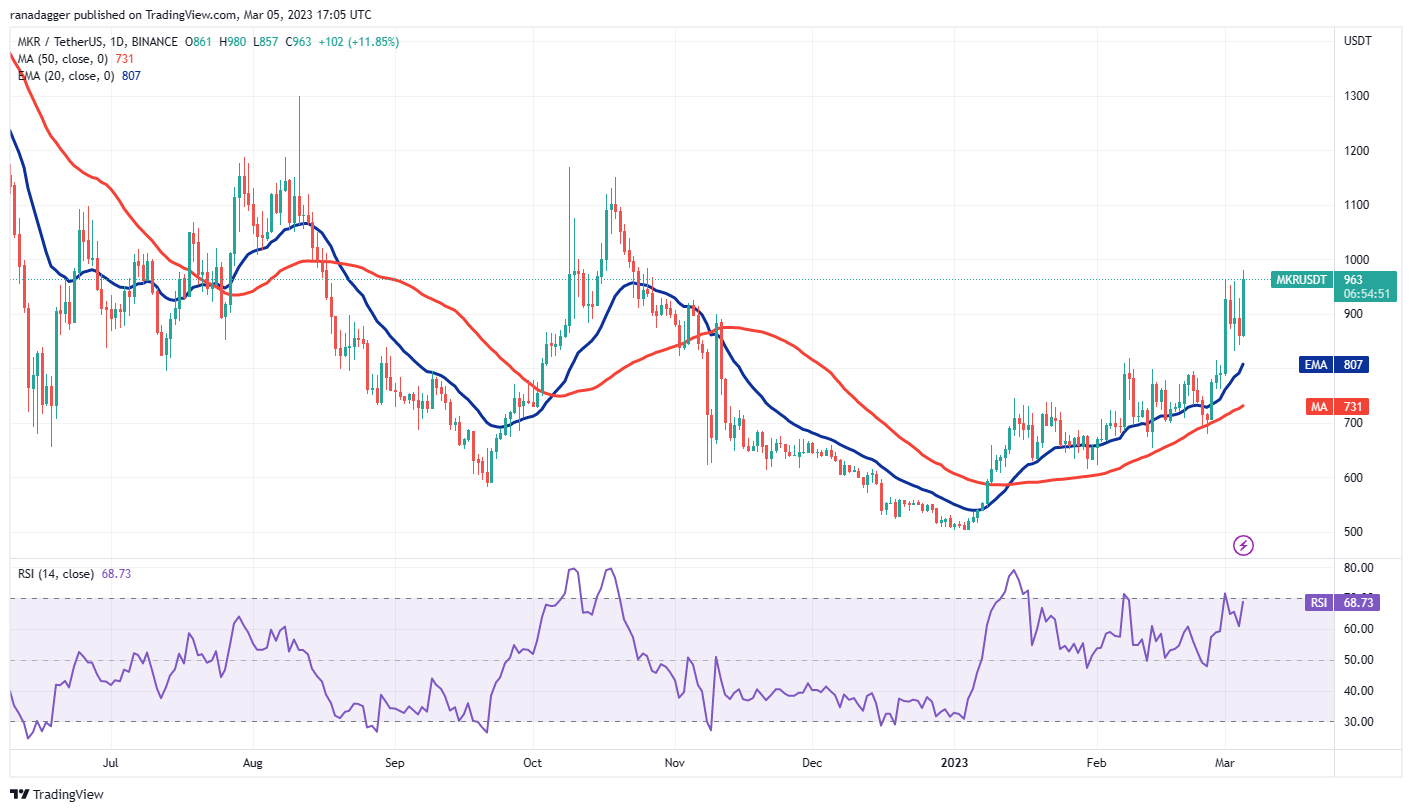
The rising moving averages and the RSI in positive territory indicate that the path of least resistance is to the upside. If the buyers sustain the price above $963, the MKR/USDT pair can start its journey to the $1,150 to $1,170 resistance zone.
If the bears want to stop the uptrend, they will have to drop the price below the 20-day EMA ($807). If they manage to do that, it is possible that several traders will stop in the short term. The pair can then drop to the 50-day SMA ($731).
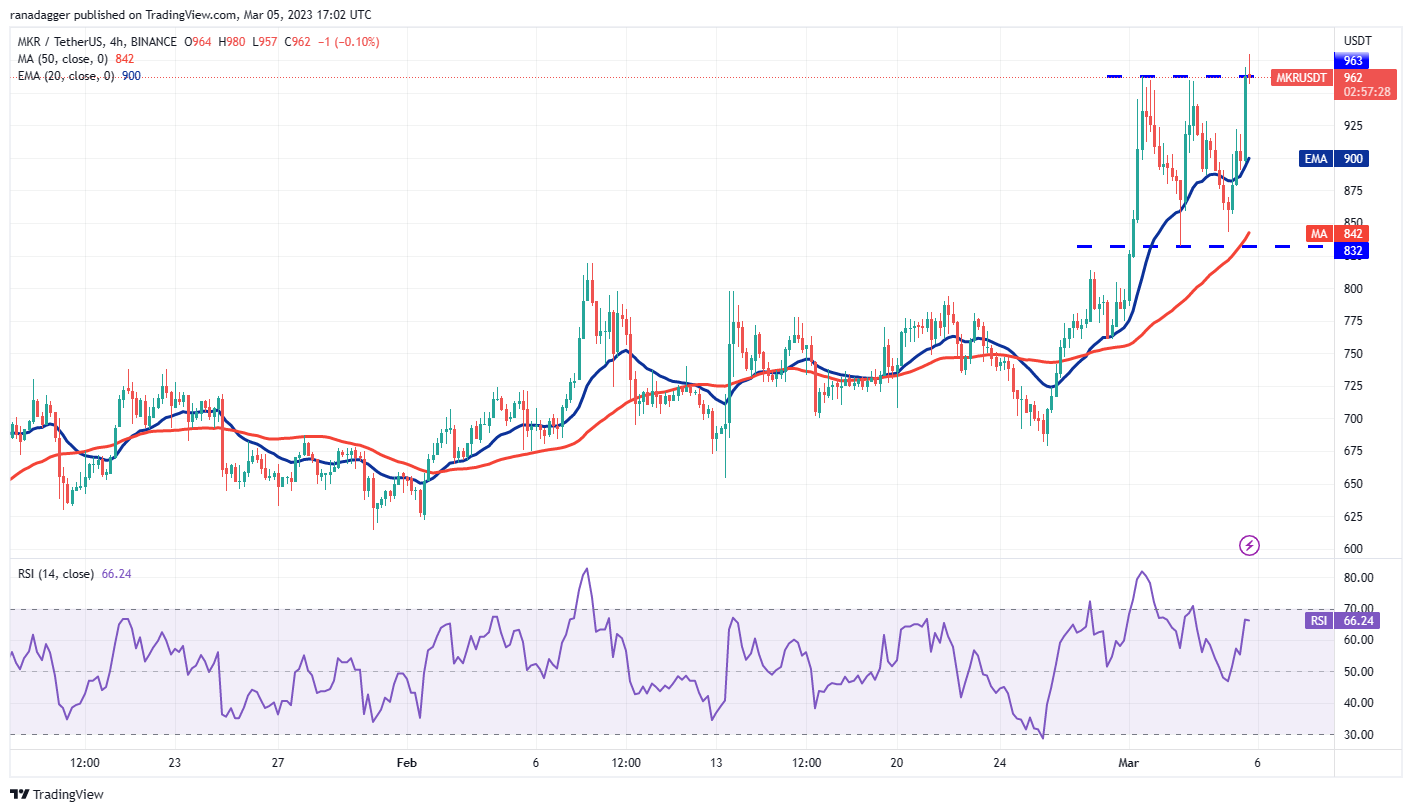
The pair has been trading between $832 and $963 for some time, but the bulls are trying to push the price out of the range. The 20-EMA has turned up and the RSI is in the positive territory, indicating that the bulls are in control.
If the price sustains above $963, the pair may attempt a rally towards the $1,094 target. On the other hand, if the price falls sharply below $963, it will suggest that the breakout may have been a bull trap. That could extend the consolidation for a while longer.
The views, thoughts and opinions expressed here are those of the authors alone and do not necessarily reflect or represent the views and opinions of Cointelegraph.
This article does not contain investment advice or recommendations. Every investment and trading move involves risk, and readers should do their own research when making a decision.
![]()
![]()
![]()
![]()
![]()
![]()
![]()
![]()
![]()
![]()
![]()
![]()
![]()
![]()
![]()
![]()
![]()
![]()
![]()
 NEWSLETTER
NEWSLETTER





